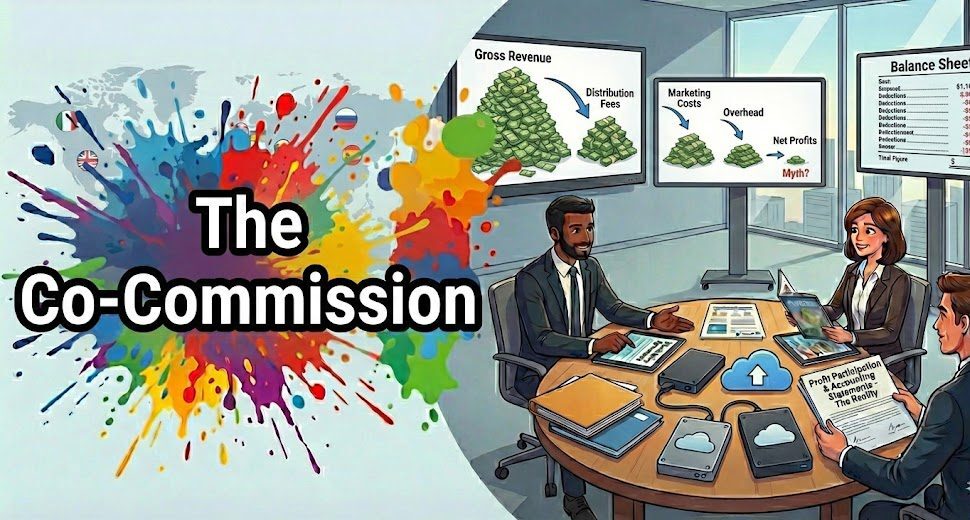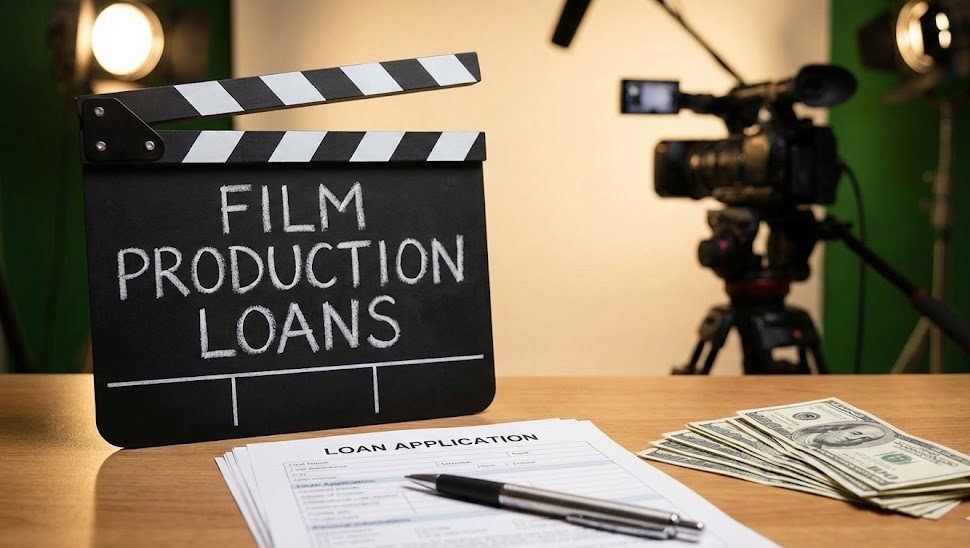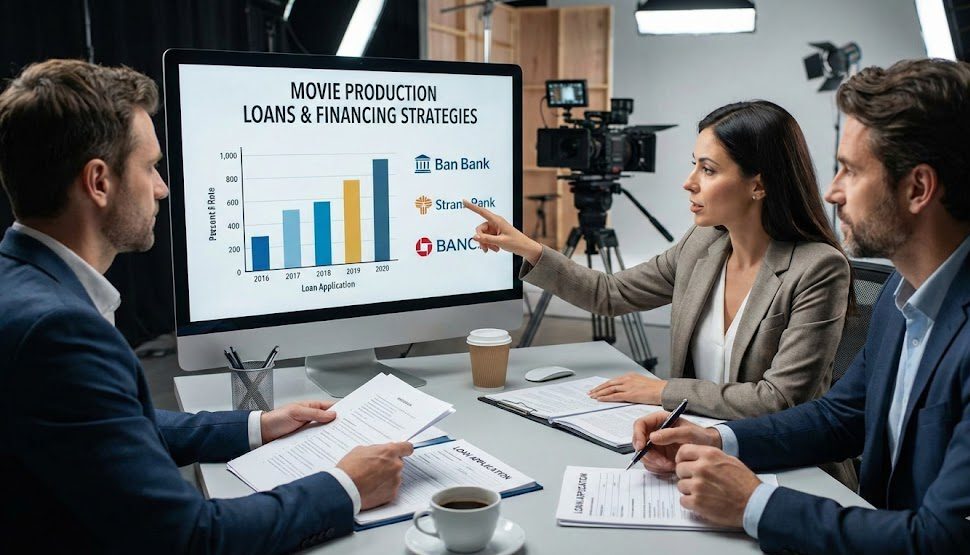Turning a book into a film or TV series is a captivating journey that bridges the literary world with visual storytelling. The book to screen adaptation process has become a vital part of the global entertainment supply chain, offering countless opportunities for content buyers, distributors, and production houses. In this article, we’ll explore the steps of this transformation, challenges, best practices, and how Vitrina helps connect the right partners in this space.
Introduction
Book to screen adaptation is a dynamic process that transforms novels, short stories, and even comic books into visual experiences for film and television. With the rise of streaming platforms and international content demand, the ability to adapt a compelling narrative into an engaging screen product has never been more critical.
For Vitrina’s audience—comprising content buyers, distributors, and production houses—understanding how to navigate this adaptation process opens doors to exciting new opportunities in content creation and acquisition. Whether you’re sourcing new projects or looking to offer adaptation services, this article provides an in-depth view of the essential steps, common challenges, and trends in the book to screen world.
Key Takeaways
| Topic | Summary |
| Book to Screen Adaptation Basics | Learn how to turn a book into a screenplay and bring it to the screen |
| Challenges and Costs | Understand the financial and creative hurdles in the adaptation process |
| Legal Considerations | Learn about intellectual property rights and acquiring adaptation rights |
| Industry Trends | Explore key trends in the book to screen industry for 2024 |
| Vitrina’s Role | Discover how Vitrina connects global buyers and service providers in this space |
Understanding Book to Screen Adaptation
What is the Book to Screen Process?
Book to screen adaptation involves converting written works like novels or short stories into screenplays for film or television. It requires transforming literary elements—like detailed internal dialogues or long narrative arcs—into visual and concise storytelling that fits the medium. Vitrina plays a critical role in connecting production houses and service providers with the right partners in this adaptation process.
Famous Book to Screen Adaptations
Many of the most successful films and TV series began as books. Iconic adaptations like Harry Potter, The Lord of the Rings, and The Hunger Games demonstrate the power of book to screen storytelling. These successful adaptations have made billions and proven that a strong story can thrive across multiple formats.
From Bestseller to Blockbuster

Book to Screen Adaptation Process
Book to Screen Adaptation: Step-by-Step Guide
The book to screen process typically involves several key stages:
- Step 1: Acquiring Adaptation Rights – Before any adaptation can occur, the rights to the book must be secured. This legal process ensures that the production team has the authority to turn the book into a film or series.
- Step 2: Writing the Screenplay – The next step is to create a screenplay, which distills the book’s essence into a visual format, focusing on dialogue, action, and pacing.
- Step 3: Casting and Production – Once the screenplay is finalized, casting and production begin. The right cast can bring characters to life and add layers to the adaptation.
- Step 4: Post-production – This includes editing, sound design, and visual effects, ensuring the story is polished for its audience.
How to Adapt a Book to Screen
Successfully adapting a book to screen requires:
- Understanding the story’s core: Stay true to the book’s central theme.
- Streamlining the plot: Cut unnecessary subplots or characters to fit within a film or episodic format.
- Collaboration: Work closely with the original author (if possible) to maintain the integrity of the story.
Challenges in Book to Screen Adaptations
Adapting a book presents unique challenges, such as:
- Condensing the narrative: Books often contain complex subplots that may need to be streamlined for time.
- Staying faithful to the source material: Maintaining the heart of the original story while making necessary changes for the screen can be difficult.
Bring Your Story to Screen

Best Practices and Tips
Best Practices for Book to Screen Adaptations
Here are some best practices for successfully adapting a book into a screenplay:
- Respect the source material: Don’t stray too far from what made the book successful.
- Focus on strong characters: Well-developed characters often translate well to the screen.
- Visual storytelling: Remember that film is a visual medium—show, don’t just tell.
Tips for Book to Screen Screenwriters
For screenwriters working on book-to-screen adaptations:
- Start with an outline: Map out the story’s key moments to ensure a cohesive narrative.
- Cut unnecessary details: A book’s pacing doesn’t always work for film. Streamline the plot.
- Dialogue is key: Adapt internal thoughts into meaningful dialogue or action.
Common Mistakes in Book to Screen Adaptations
- Overcomplicating the plot: Trying to fit every detail from the book can overwhelm the screenplay.
- Neglecting pacing: A movie or TV show has a different rhythm than a book—pacing must adapt accordingly.
- Ignoring the medium: Some elements that work in a book (e.g., extensive inner monologues) don’t translate well to screen.
Adapt Your Bestseller with Ease

Legal and Financial Considerations
Legal Rights for Book to Screen Adaptations
Acquiring the proper legal rights is the first step in any book to screen adaptation. The production company must secure the rights to adapt the book into a visual medium, either through purchase or licensing. Without the proper agreements, legal complications can arise that may derail the entire project.
How Much Does a Book to Screen Adaptation Cost?
The cost of a book to screen adaptation varies widely depending on factors like:
- Rights acquisition: Popular books may cost more to adapt.
- Production costs: The scope of the adaptation (e.g., a fantasy series vs. a small indie film) affects overall costs.
- Talent fees: Hiring top writers, directors, and actors adds to the budget.
How to Find the Right Producer for Book to Screen Adaptations
Finding the right producer for your adaptation is critical to its success. Vitrina offers a platform where content buyers and producers can connect, helping projects get off the ground.
Specialized Approaches and Industry Insights
Book to Screen Adaptations: TV Shows vs Movies
Books can be adapted into either TV shows or movies, but each format offers unique advantages:
- TV shows allow for extended storylines and character development.
- Movies provide a more concise, impactful narrative.
Deciding which format best suits the book is essential to the adaptation’s success.
Top Genres for Book to Screen Adaptations
Certain genres are more popular for book to screen adaptations, including:
- Fantasy and science fiction: These often have strong visual appeal and large fanbases.
- Thrillers and crime dramas: Fast-paced plots translate well to film.
- Historical dramas: These attract audiences who enjoy rich, detailed storytelling.
Top Directors in Book to Screen Adaptations
Directors like Peter Jackson (The Lord of the Rings) and David Fincher (Gone Girl) have become known for their mastery in book to screen adaptations. Collaborating with experienced directors can help ensure a successful adaptation.
Trends and Future Insights
Book to Screen Adaptation Trends for 2024
The landscape of book to screen adaptation is constantly evolving. In 2024, expect:
- AI-driven storytelling tools to assist in early screenplay drafts.
- Increased demand for diverse stories across genres.
- Streaming platforms like Netflix and Amazon Prime continuing to fuel demand for adapted content.
The Future of Book to Screen Adaptations
Looking forward, the future of book to screen adaptations seems bright. As more international markets open up, there will be an even greater appetite for fresh, compelling adaptations from different cultural backgrounds.
Marketing and Distribution
How to Market a Book to Screen Adaptation
Effective marketing is crucial for any successful adaptation. Here are a few key strategies:
- Build anticipation: Tease the project early, especially if the book has a fanbase.
- Leverage social media: Share behind-the-scenes content to engage fans.
- Collaborate with book communities: Engage book clubs and literary influencers to create buzz.
Book to Screen Adaptation Success Stories
The Hunger Games and Game of Thrones are prime examples of book-to-screen adaptations that used strong marketing strategies to create massive global success.
Conclusion
The book to screen adaptation process is complex, but with the right approach, it can yield incredible results. For Vitrina’s audience of content buyers, producers, and service providers, understanding how to navigate this process is essential. Whether you’re acquiring rights, writing screenplays, or overseeing production, the insights shared here can help ensure that your next adaptation is a success. And with Vitrina’s global network, connecting with the right partners has never been easier.
Frequently Asked Questions
A book to screen adaptation is the process of turning a book into a screenplay for a movie or TV show.
Costs vary, but they can range from a few thousand to millions depending on rights and production scope.
It can take anywhere from several months to a few years, depending on the complexity of the project.
Yes, securing the legal rights to adapt a book is essential before starting the project.
Yes, Vitrina connects content buyers, producers, and service providers globally for book to screen adaptations.
Ready to explore book to screen adaptation opportunities? Join Vitrina today and connect with the industry’s top writers, producers, and content buyers. Whether you’re pitching a project or looking for the right partner, Vitrina offers unmatched access to the global entertainment supply chain. Start your journey now and bring great stories to the screen!
















































